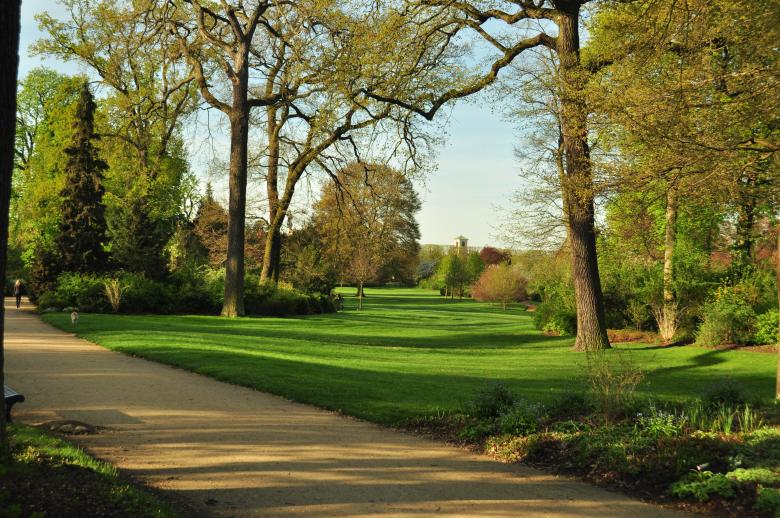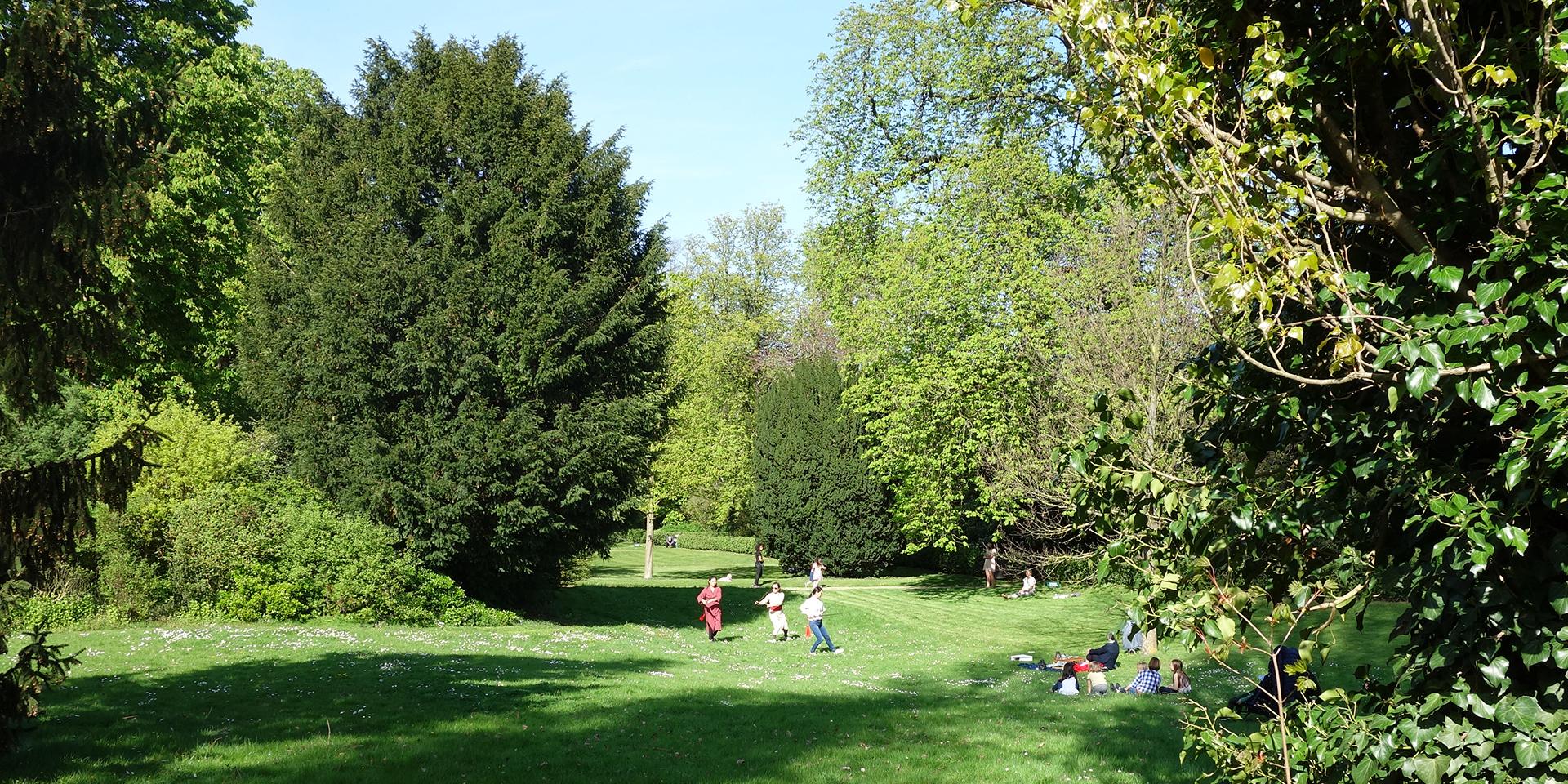An English garden for the king of France
The arrival of the railroad in Saint-Germain-en-Laye, in the 1840s, was at the origin of the creation of the English garden. This romantic haven heralded the emergence of urban gardens in the 19th century.

In 1845, work began on extending the railway line from Paris to Saint-Germain-en-Laye to a station built on the outskirts of the Château-Vieux. This considerably altered the layout of the gardens of the former royal residence because, in order to make way for the train and build the station, the forest and Le Nôtre's Grand Parterre were mutilated with a long, angled trench that broke the perspective towards the Avenue des Loges. This work was carried out with the authorization of King Louis-Philippe, owner of the gardens. However, to compensate for the amputation of part of the estate, the monarch asked that three hectares taken from the royal forest be used to create an English garden (at the expense of the railway company), the construction of which he would follow with great attention.
An intimate place with a delicate interplay of views
Alexandre Loaisel de Tréogate, an engineer of the Crown Buildings, was in charge of the layout of this new space according to the romantic conception of gardens. He kept some of the oaks from the old royal forest and had others cut down to free up space for beds and groves. He laid out serpentine paths that invite a winding journey through the various groves. It is an intimate, natural, landscape-style garden, where perspectives are revealed as you walk along. Thus, a delicate play of glances is established, according to axes and cones of vision readable by the walker.
The English garden appears as a border that serves as a transition between the regular garden of Le Nôtre and the forest space. However, the strict layout of the French garden remains quite strong with the presence of three rectilinear axes that are the continuation of the paths designed by Le Nôtre. Over time, the successive transformations of the garden have modified the perspectives, leading to a harmful disturbance of the initial visual functioning. The current restitution of certain groves and paths aims to recover this singular visual functioning.


